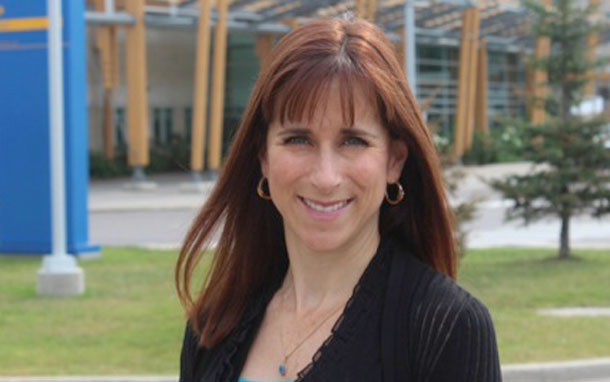

Research Backs Up Patient Care in Thunder Bay
THUNDER BAY – Healthbeat – Sylvia Pratt* has owned horses and enjoyed horseback riding for as long as she can remember, but after an accident wrenched her back five years ago, she wasn’t sure if she would ever want to ride again.
[sws_pullquote_right]“Caroline was the first person I talked to who I felt actually listened to me and heard me,” said Pratt [/sws_pullquote_right] Pratt, who did not have a family doctor at the time, went to a rehabilitation practitioner. A year later and still in pain, she went to another. “Over a number of years, I went to 3 or 4 different practitioners, each for a long period of time,” she said.
Meanwhile the pain was starting to take its toll on Pratt, who had always been physically active until the accident. A regular participant in the annual Firefighters’ 10 Mile Road Race, she was now in so much pain that she was afraid to make it worse or break bones. “I started to shrink, stay at home and do less. I was starting to avoid my horses. I pretty much didn’t do anything anymore.” The less she did, the more the pain took over.
Pratt went to a Nurse Practitioner who suggested she join a pilot study looking into a new model of care for low back pain patients using evidence-based treatment plans that emphasize self-management.
The Inter-professional Spine Assessment and Education Clinics (ISAEC) is a provincial pilot spearheaded by the University Health Network and funded by the Government of Ontario. It launched in Toronto, Hamilton and Thunder Bay in November 2012 and runs until the end of November 2013.
“At all three sites involved in this pilot, we have already seen real, tangible improvements in the quality of care and outcomes of our low back pain patients,” said Caroline Fanti, Advanced Practice Physiotherapist and the Practice Leader with the ISAEC program based out of Thunder Bay Regional Health Sciences Centre (TBRHSC).
“Caroline was the first person I talked to who I felt actually listened to me and heard me,” said Pratt. After a lengthy first appointment, responding to what seemed like an endless list of questions, Pratt was surprised at the prognosis. “They essentially said to me ‘There’s nothing wrong with you – go back to what you used to do, very slowly. We’ll be here to support you.’”
For years, Pratt had believed that she was “broken” and needed to be fixed or needed an adjustment. “But the person responsible for fixing my body was me,” she says.
“At ISAEC the goal wasn’t to treat me every week, but to get me out of routine care and back to how I used to be through pain management and looking after myself.”
Fanti also explained that the MRIs ordered by Pratt’s previous healthcare providers did not assist or change the necessary treatment and management plan. Fanti reviewed the findings of the assessment and physical examination and assured her that there was nothing wrong with her skeletally and that she did not need to worry that physical activity would be harmful.
Instead Pratt was assigned a series of stretches and exercises, based on her ability, with a view to gradually building up to more intense activity. She began with small stretches, graduated to walking, then running and finally cycling. “I literally went from sitting on the couch in pain all of the time in December to running almost every day on my lunch hour,” says Pratt. She’s also returned to horseback riding and plans to run the 10 Mile Race next year.
“As an academic health sciences centre, participating in research and pilot studies like ISAEC help increase efficiency, access to evidence-based practices and, ultimately, to a positive patient experience and improved patient outcomes,” said Dr. Rhonda Crocker Ellacott, Executive Vice President, Patient Care and Chief Nursing Executive, TBRHSC.
*The patient’s real name cannot be used as per research guidelines.













